DR. THOMAS MEHLHORN
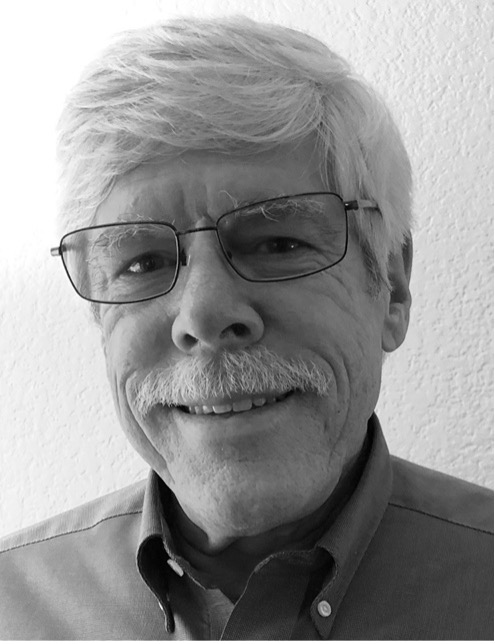 Session: Reaction schemes
Session: Reaction schemes
Title: The “hybrid” approach to proton-boron inertial fusion
Abstract: The Lawson criterion for proton-boron (p-11B) thermonuclear fusion is substantially higher than for deuterium-tritium (DT) because the fusion cross section is lower and peaks at higher ion energies. The Maxwellian averaged p-11B reactivity peaks at several hundred keV, where bremsstrahlung radiation emission may dominate over fusion reactions if electrons and ions are in thermal equilibrium and the losses are unrestricted. Non-equilibrium burn has often been suggested to realize the benefits of this aneutronic reaction, but the predominance of elastic scattering over fusion reactivity makes this difficult to achieve. Ultrashort pulse lasers (USPL) offer new possibilities for initiating non-equilibrium thermonuclear burn and published experiments have measured significant numbers of p-11B alpha particles. However, our analysis shows these alphas are from beam fusion reactions that do not scale to net gain and energy production. Therefore, we are exploring a “hybrid”, fast-ignition-like approach to p-11B where the fuel is imploded to high density and irradiated by protons accelerated by a USPL. We are mapping the burn space using analytic scaling; in a fluid approximation using Helios-CR and a beam deposition/reaction model; and in a hybrid kinetic-fluid approach using Chicago.
We will report on ignition and burn in fast ignition-like configurations, accounting for the power balance between heating, fusion, charged particle deposition, bremsstrahlung, thermal conduction, and hydrodynamic expansion as a function of fuel density for both isochoric and isobaric profiles. We will use models that include the effects of density and temperature on the interaction of charged particles in the plasma, including both slowing down and up scattering terms. We will also consider designs that include radiation trapping to reduce losses. Finally, we will discuss options for validating calculations of reactivity in compressed targets on experimental platforms such as Omega-60 and Omega-EP and Gekko and LFEX.
Short CV: Dr. Tom Mehlhorn is a consultant to several companies including HB11 Energy Pty LTD, an adjunct professor at the University of Michigan, and a Distinguished Visiting Scientist at the University of Rochester Laboratory for Laser Energetics. From 2009 to 2019 he directed the Naval Research Laboratory Division of Plasma Physics, following a 31-year career at Sandia National Laboratories. He is the author/coauthor of over 160 papers (H-index = 40) and is a fellow of the AAAS, APS Division of Plasma Physics, the IEEE, and the ANS. He received the IEEE NPSS Peter Haas Award (2019) and a Lockheed Martin NOVA Award for Thermonuclear Neutrons on Z (2003).
PROFESSOR DR. HARTMUT RUHL
Session: Reaction schemes
Title: A nonthermal mixed fuel reactor concept for nuclear fusion
Abstract: We propose a laser-driven nano-structured micro-reactor concept operating with mixed nuclear fusion fuels. The micro-reactor is capable of making use of a range of neutronic and aneutronic fuels. Its core parts consists of an embedded nanoscopic nuclear fuel based laser-driven nano-accelerator that is capable of producing non-thermal fuel distributions almost instantly. We show that nano-structures used as building blocks enable a reactor concept capable of producing surplus fusion energy without yet making use of auto-cataclysm.
Short CV: University professor, chair of computational physics and dynamical quantum fields at the LMU in Munich, recent work "Radiation reaction, numerical Heisenberg-Euler dynamics in weak field approximation, quantum transport theory, non-thermal nuclear fusion reactor concepts".
PROFESSOR DR. HC DIETER H.H. HOFFMANN
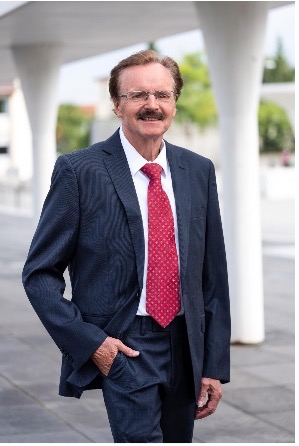
Session: Reaction schemes
Title: Laser and Particle Beam Interaction with Ionized Matter and Perspectives for Fusion Energy
Abstract: Intense ion- and laser beams are complimentary tools to induce High Energy Density in matter. The development of this field is intimately connected to technological advances of the field. We will give an overview of the projects in High Energy Density science that we currently address at Xi’An Jiaotong University with aspects of inertial fusion energy and due to recent developments we will address the proton-11Boron fusion reaction.
BIOGRAPHY: Professor Hoffmann graduated in physics from the Ruhr-Universität Bochum (Germany) in 1975. He then completed his doctorate at the Technical University of Darmstadt until 1979. This was followed by a stay abroad at Stanford University, California, USA (Alexander-von Humboldt fellowship) and again a position at the TU Darmstadt, which lasted until 1982. Professor Hoffmann then worked for the Max Planck Institute of Quantum Optics in Garching near Munich and for the Gesellschaft für Schwerionenforschung in Darmstadt. He habilitated at the TU Darmstadt in 1993 and accepted a professorship in experimental nuclear physics at the University of Erlangen. In 1998 he became professor of nuclear physics in Darmstadt. In 2017 he accepted a professorship as especially appointed professor under the 1000 talents program of China.
Scientific Work: Professor Hoffmann is author and co-author of more than 400 peer reviewed scientific articles covering the areas of Nuclear Physics, Plasma Physics and Astroparticle Physics. His special interest is in High Energy Density Physics related to Fusion Science.
Scientific positions:
1996–1997:Director of the Physics Institute of the Friedrich-Alexander-University, Erlangen
1998–1999:Director of the Institute of Nuclear Physics, TU Darmstadt
2002- 2021:Editor of the journal Laser and Particle Beams, Cambridge University Press
2003-2015:Speaker of the HEDgeHOB collaboration of the FAIR/GSI
2002-2021:editor-in-chief of Laser and Particle Beams, Cambridge University Press
since 2004:Member of the editorial board of the journal Contributions to Plasma Physics
since 2017:International Guest editor of Matter and Radiation at Extremes publ. by CAEP and AIP
Awards:
1999: Honorary doctorate from the Russian Academy of Sciences
2009: Honorary Professor of Xianyang Normal University, China
2015: Honorary Professor of National Nuclear Research University, MEPhI, Moscow
2019: Friendship award of the Chinese government
2019: Sanqin award of Shaanxi Provincial People’s Government
DR KATARZYNA BATANI
 Abstract: Recent experiments with high-intensity lasers have shown record production of alpha particles by irradiating boron-hydrogen targets [1, 2, 3]. This opens the way to completely new studies on proton-boron fusion with multiple goals:
Abstract: Recent experiments with high-intensity lasers have shown record production of alpha particles by irradiating boron-hydrogen targets [1, 2, 3]. This opens the way to completely new studies on proton-boron fusion with multiple goals:
i) studies related to nuclear fusion. The proton-boron fusion reaction produces 3 a-particles and releases a large energy. It is considered an interesting alternative to deuterium-tritium fusion because it produces no neutrons, therefore no activation and radioactive wastes. However, it is also considered too difficult due to the enormous temperatures needed to trigger it. Laser-driven experiments may offer an interesting non-thermal fusion approach, alternative to classical inertial fusion schemes. In addition, it will be possible to address still unanswered key questions like determining the penetration of a -particles in dense plasmas.
ii) generation of novel laser-driven a-particle sources. Currently there are no high-current and compact a-particle sources (they are typically produced from radioactive materials or from accelerating He-ions in large-size cyclotrons). Laser-driven a-particle sources are promising due to the high brightness implied by the small size of the laser-plasma interaction point and the short particle bunch duration. Such sources could be used for multidisciplinary applications, including medical ones (e.g. radioisotope production for cancer therapy or PET).
The COST Action CA21128 - PROBONO (PROton BOron Nuclear fusion: from energy production to medical applicatiOns) aims at understanding the physics involved in the emerging topic of laser-driven pB fusion, including the study of Equation of State of boron and boron compounds which is interesting for several domains ranging from astrophysics to inertial confinement fusion. The Action’s goals are to facilitate access to experimental infrastructures, maximize production of new knowledge, boost the career of young researchers by fostering opportunities for training, and finally interconnect researchers across countries building a well-organized community focused on pB research.
REFERENCES:
[1] L.Giuffrida, et al. Phys. Rev. E 101, 013204 (2020)
[2] J.Bonvalet, et al. Phys. Rev. E 103, 053202 (2021)
[3] D.Margarone, et al. Applied Science (2022)
DR. ALDO BONASERA
Session: Theory and Simulation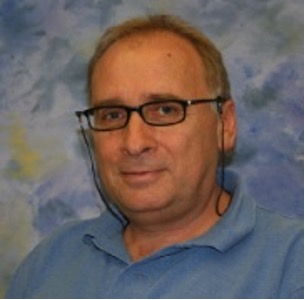
Title: Dynamics of fusion in laser produced non-equilibrated plasmas
Abstract: The National Ignition Facility has recently demonstrated the feasibility of energy production from fusion using D + T fuel (1st generation fuel). We discuss some features and ideas using the 2nd generation d + 3He and 3rd generation p + 11B fuels using lasers.
Short CV: Senior Scientist, Cyclotron Institute, Texas A&M University College Station, TX 77843-3366 & LNS-INFN, Catania Italy.
Selected Publications:
[1] Nuclear Astrophysics with Lasers, Meirong Huang, Hernan J. Quevedo, Guoqiang Zhang and Aldo Bonasera 10.1080/10619127.2019.1603555
[2] Controlling the Worldwide Chaotic Spreading of COVID-19 through Vaccination,Hua Zheng, Aldo Bonasera, https://doi.org/10.4236/jmp.2022.131001; https://www.scipod.global/controlling-the-worldwide/chaotic/spreading-of-covid-19-through-vaccinations-dr-aldo-bonasera
[3] Quale energia per il futuro?, A.Bonasera, Springer Verlag publ., 2010.
[4] The Boltzmann equation at the Borderline, A. Bonasera, F. Gulminelli and J. Molitoris, Phys. Rep.243(1994)1.
DR. PHILIPPE NICOLAI
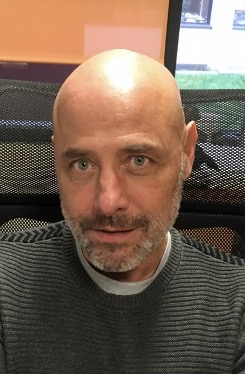
Session: Theory and Simulation
Title: State of the art of numerical tools for simulating the proton-boron reactions and the α-particle production
Abstract: The use of laser beams to trigger proton-boron fusion reactions requires a chain of numerical codes for interpreting and describing all involved physical processes. The main mechanism consists in producing energetic laser-driven protons inducing the generation of α-particles in a secondary boron target or directly in a hydrogenated boron-rich target.
The use of multiple codes is required because, in experiments with high intensity laser systems, the main laser pulse is often preceded by a low intensity pedestal, produced by amplified spontaneous emission. This pedestal may induce target expansion, pre-plasma formation, and so may modify the interaction of the main laser pulse with the target. Simulations of pedestal effects can be performed with 2D hydrodynamics codes (CHIC [1]). Nevertheless, above a given laser intensity, typically a few 1016 W/cm2, other processes occur and another type of codes must be used such as Particle in Cell codes (SMILEI [2]) which compute laser matter interaction for Ultra High Intensities and proton production, in terms of energy, angle and position. Finally, Monte-Carlo codes, such as FLUKA [3], are needed to accurately model the nuclear reactions and transport of ions (α-particles), photons and neutrons.
The numerical chain has been tested through a recent experiment performed with a high intensity, high energy laser system [4,5]. The simulations clarify the mechanisms of nuclear reactions, of α-particle production and transport through the boron targets, in the pitcher-catcher or in the direct illumination geometries. Nevertheless, the chain needs still to be improved and its limits together with the required progresses will be discussed.
Short CV: Since 2003, Philippe Nicolaï is working as a researcher at CELIA, University of Bordeaux. He has been working on inertial confinement fusion for energy production and more specifically on the transport of electrons and protons within plasmas created by high intensity, high energy lasers. More recently, he has been studying the processes of particle acceleration by ultra-intense lasers using solid or gaseous targets. These laser-driven-particles may trigger nuclear reactions in a secondary target, as it is the case for proton-boron fusion reactions. Although he is a theoretician and numerical scientist, he regularly participates to experimental campaigns for comparing code results with the reality.
REFERENCES:
[1] J.Breill, S. Galera, and P.-H. Maire, Computers Fluids 46, 161 (2011)
[2] J.Derouillat, Comput. Phys. Comm. 222, 351 (2018)
[3] F.Sommerer, Phys. Med. Biol. 51, 4385 (2006)
[4] J. Bonvalet, Phys. Rev. E, 103, 053202 (2021)
[5] D. Margarone, Applied Sciences 12, 1444 (2022)
DR. FABRIZIO CONSOLI
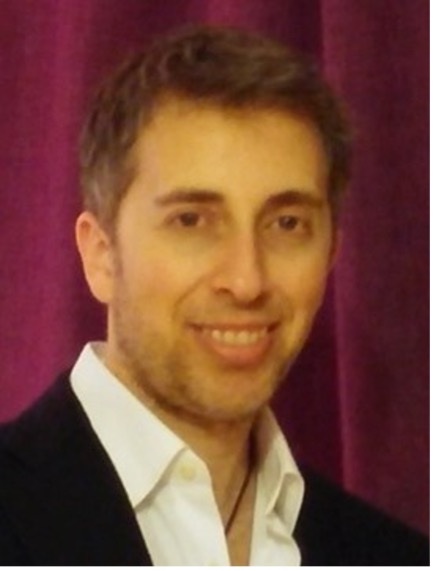 Session: Diagnostics and targets
Session: Diagnostics and targets
Title: Characterization of p-11B fusion reactions in laser- matter experiments
Abstract: An increased international interest has been developing on the last fifteen years on low-rate fusion reactions, and in particular on 11B(p,α)2α, in experiments of laser-matter interaction of high energy and high intensity. The research activity is focused on theoretical/numerical modelling, developing of new interaction schemes and of tailored diagnostics. The determination of actual fusion rates and yields in laser-generated plasmas is one of the recognized hot topics.
In this talk, diagnostic methodologies commonly used for alpha particles generated by the 11B(p,α)2α reaction will be discussed with related advantages and limitations. Examples of solutions, designed to deal with these limitations, will be described. The univocal characterization of the alpha products coming from this reaction is a difficult task and often still an open issue. The simultaneous use of several diagnostic tools placed in close proximity to the target may lead to its solution. Considerations derived in this talk can also be applied to other low-rate fusion reactions.
Short CV: Fabrizio Consoli is the Head of the Laboratory of Plasma Applications and Interdisciplinary Experiments at ENEA-Centro Ricerche Frascati since 2022. He heads the ENEA-Task Force “Research and Technologies for Inertial Fusion” and the ABC laser group since 2019. He obtained his Ph.D. in Computer Science and Telecommunication in 2004 (University of Catania, Italy) and then postdoctoral positions and contracts at CSFNSM (2005) and at INFN-LNS (2004-2011), both in Catania, for researches on electromagnetisms, microwaves, plasmas, lasers, and particle accelerators. He joined ENEA-Centro Ricerche Frascati in 2011. His main present research activities focus on inertial confinement fusion and laser-matter interactions.
PROFESSOR DR. ANDREY SHUKUROV
 Session: Diagnostics and targets
Session: Diagnostics and targets
Title: Can plasma polymers serve as a source of hydrogen for laser-driven pB fusion?
Abstract: Plasma polymers are a class of materials produced by introducing organic precursors into low-temperature non-equilibrium plasma. Upon collisions with ‘hot’ electrons, precursor molecules become fragmented with the formation of free radicals. These may recombine either in the gas phase or on adjacent surfaces to trigger the polymerization processes, resulting in the growth of nanoparticles or thin films. Since the 1960s, plasma polymers have been considered for use as dielectric coatings in microelectronics and as protective and barrier coatings. Later, functionalized plasma polymers have been developed with a diverse zoo of chemical compositions that might be attractive in biomedicine.
This talk considers plasma polymers in the context of their potential use as an affordable source of hydrogen for laser-driven proton-boron (pB) fusion. Typical methods of Plasma-Enhanced Chemical Vapor Deposition and Plasma-Assisted Vapor Phase Deposition will be discussed in terms of their application to the synthesis of hydrocarbon (C:H) thin films and nanoparticles. Current ideas about the structure, cross-link density, free volume, and hydrogen content will be given. Possible challenges in combining such plasma polymers with boron-rich materials will be highlighted.
Short CV: Andrei Choukourov graduated from the Ivanovo State University of Chemistry and Technology in Russia and obtained Ph.D. from the Charles University, Prague, Czech Republic. After completing several appointments at the University of Illinois at Chicago and Nagoya University, Japan, he received an associate professorship and then a full professorship at Charles University. His group performs research in various areas of science, including but not limited to phase separation and nanoconfinement in homo- and copolymer thin films, nanomaterials synthesis under vacuum and low-temperature plasma conditions, and solution plasma processing of natural polymers.
DR. GAL AMIT
 Session: Applications
Session: Applications
Title: Detecting Particles on CR-39 Using Novel Deep Learning Algorithm
Abstract: A revolutionary method for the detection of particles on CR-39 is presented. The method is called FAINE, which stands for fast artificial intelligence neutron detection system. FAINE automatically classifies tracks of fast neutrons on CR-39 detectors using a deep learning model. In most modern fast neutron dosimetry systems, after the first two stages of etching and imaging of the CR-39 detectors, the third stage uses various types of computer vision systems along with a manual revision in order to count the CR-39 tracks and convert them to a dose in mSv units. FAINE enhances these modern systems by introducing a novel algorithm, which uses machine learning to classify all CR-39 tracks as either real neutron tracks or any other sign such as scratches, dirt, or even cleaning remainders over the CR-39. FAINE makes the third stage of manual CR-39 tracks revision unnecessary and provides a totally repeatable and accurate way of measuring neutrons flux or dose. Our experimental results show an accuracy rate of 96.7% for the true positive tracks and true negative tracks detected by FAINE against the current method, which uses computer vision followed by manual revision. FAINE is now in the process of calibration for both alpha-particles detection and fast neutron spectrometry classification and is expected to be very useful in analyzing results of proton-boron11 fusion experiments. As it is fully automatic, FAINE will also enhance the quality assurance and effectiveness of external dosimetry, and will lower the uncertainty for the reported dose measurements.
Short CV: Gal Amit has a BSc. in physics and computer sciences and a MSc. in Physics all from Tel-Aviv University. Gal has been working in the last few years at SNRC as the head of dosimetry section group. Before SNRC he was working at several SW start-ups and as an algorithmic team leader at HP. Gal is interested in various dosimetry technologies of alpha, beta, gamma and neutron radiation. He is also interested in numerical simulations of physical processes and in Quantum optics - a topic in which he is doing his Physics PhD these days.
DR. JUAN ESPOSITO
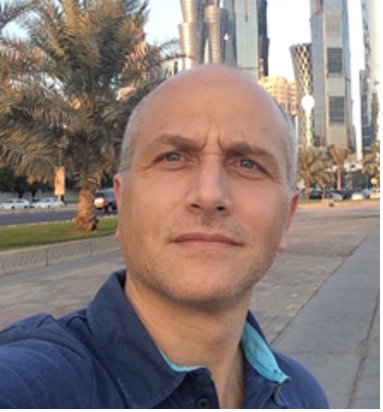 Session: Applications
Session: Applications
Title: Use of alpha particle beams in medical radionuclide production
Abstract: The use of accelerated α-particles beams in the last decades has found valuable applications in many fields, ranging from material characterization analyses up to some manufacturing process in the industrial sector. Another fundamental area in which the availability of α-particle beams, having some tens MeV energy and with enough intensity, may be of great advantage, is the accelerator-based production of novel, as well as already used, radionuclides for a new class of highly selective radiopharmaceutical products, for targeted application in nuclear medicine. The interest of INFN in this field is witnessed in the last years also in connection with the possible use of the new high performance (35-70 MeV) proton cyclotron at LNL, in the framework of the new research infrastructure LARAMED now under construction stage.
Nowadays, a great deal of radionuclides is produced, on a routine basis, by using proton beams able to supply most of the requested daily needs, both for imaging (PET/SPECT) and therapy. This is mainly due to the large number of low-energy cyclotrons available worldwide, usually referred to as Small Medical Cyclotrons (SMC) and based upon the well-established H- ion source technology, which allows them to being accelerated as negative ions and extracted at the end of the acceleration step, with nearly 100% efficiency by using stripper foils.
However, with new technologies now at the frontier (e.g. the high intensity alpha-DTL), or the availability of high-intensity alpha sources in the near term, driven by the p(11B,𝛼)8Be – in short p-11B → 3𝛼 reaction and triggered by high-power laser systems, a new class of 𝛼 drivers may be envisaged to yield radionuclides (already established, as well as emerging ones), by exploiting new reaction routes. That may lead to a different or (in some cases) to a better radionuclidic impurity profile and may allow to bypass the limitations occurring when using proton beams. Some key radionuclides having interest in nuclear medicine, which could be produced through alpha beams are reviewed.
Short CV: Juan Esposito, PhD in nuclear engineering at Pisa University, is a senior staff research engineer at the INFN-LNL. Since 2017 Project manager of LARAMED (LAboratory of Radionuclides for MEDcine), a new research facility at LNL aimed at the cyclotron-production of conventional and emergent radioisotopes of interest for Nuclear Medicine. During 2011-2016 Chief Scientific Investigator and Coordinator of the Italian contribution activities at the International Coordinated Research Project (CRP), code F22062, entitled "Accelerator-based Alternatives to Non‐HEU production of Mo99/Tc99m" launched by IAEA (Vienna). Leader of INFN-funded R&D research projects APOTEMA (2012-2014) and TECHN-OSP (2015-2017), on feasibility studies about the alternative cyclotron-99mTc production, and METRICS (2018-2020) on R&D activities for Mn-52/51 radioisotopes production with cyclotron aimed at new approaches in Multi-Modal Imaging (MMI). Publications (Scopus 2022): 89, citations 792; Hirsch‐index: 18 (Author ID: 7102857739).
DR. LORENZO MANTI
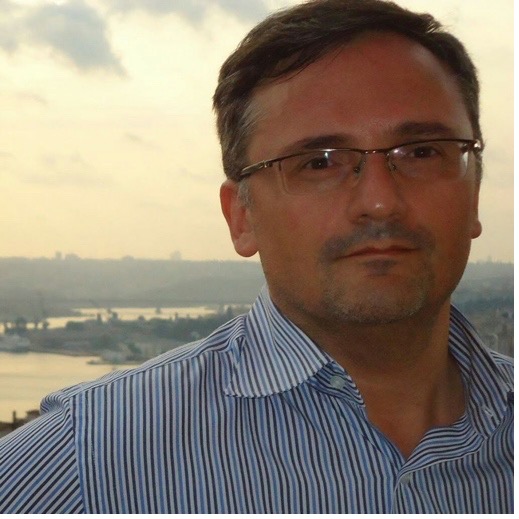
Session: Applications
Title: The proton-boron fusion reaction as a new strategy to enhance protontherapy effectiveness
Abstract: Exploitation of the p+11B → 3α (pB) reaction to increase the clinical effectiveness of protontherapy is arguably one of its most attractive and elegant applications. Here, the radiobiological rationale and the most recent experimental data will be illustrated and discussed. The working hypothesis that densely ionizing α-particles generated via the pB reaction across the tumour-conformed Spread-Out Bragg Peak will lead to an increase in proton biological effectiveness because of the induction of clustered, hence poor reparable DNA damage, appears thus far confirmed by available radiobiological data. The latter consistently show that clinical proton beams are more efficient at causing cancer cell clonogenic death in the presence of 11B carriers, such as BSH or BPA.
Furthermore, the analysis of genomic rearrangements at the chromosomal level is consistent with the highly complex DNA damage expected to be induced along the tracks of the low-energy α-particles arising from the pB reaction. Other relevant radiobiological cytogenetic endpoints (e.g. premature senescence and micronucleus formation) concur with such a notion, while medium-transfer experiments suggest a role for bystander effects. The latter could partly explain existing incongruences with computational data on the α-particle yield. Finally, irradiations using monochromatic proton beams with energy incident on cells close to the maximum value for the pB reaction cross section mechanistically corroborate its involvement in the in-vitro observed effects. Thus, the pB reaction may be a potentially useful tool to enhance the ability of protontherapy to suppress cancer proliferative competence.
Short CV: Lorenzo Manti is Associated Professor in Applied Physics at the University of Naples Federico II, Italy. For almost 30 years he has been working in experimental radiobiology, with a focus on the biological action of charged particle beams, through several projects funded by INFN and the Italian Ministry for University and Research. He has been President of the European Radiation Research Society and is currently a member of the Council of the Italian Research Society. He has supervised over 70 BSc and MSc students, authoring 80 peer-reviewed papers.

